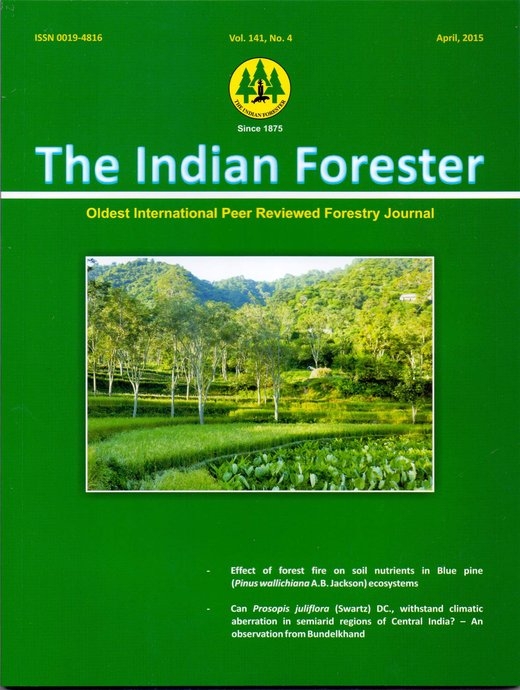Assessing the Potential of Incentive Based Plantation Involving People's Participation
DOI:
https://doi.org/10.36808/if/2015/v141i4/68926Keywords:
CDM A R Projects, Rehabilitation, Plantation, Incentive Based Plantation.Abstract
To encouragemore forestry projects under CDM and other incentive based mechanism, a pilot study was undertaken at household level in Ratlam district of Madhya Pradesh, India, which has a large area of agriculturally unproductive and degraded land. A total of 50 farmers were randomly chosen to know their perceptions and preference in order to take up plantation on modalities of CDM A R projects. The survey showed that majority of farmers expressed their willingness to raise plantation on private land on the basis of co-operative model. The study concluded that Ratlam district has the potential for taking up CDM A R projects and also for any other incentive based plantation, as majority of the pre-requisite factors and conditions required for making CDM A R projects can be fulfilled.References
Census of India. (2011) Houselisting and Housing Census Schedule. Ministry of Home Affairs. Office of Registrar General and Census Commissioner, Government of India. Retrieved 23- 08-2013.
FSI. (2011). State Forest Report. Forest Survey of India Dehradun, Uttarakhand.
IPCC (2013) Firth Assessment Report. Geneva, Intergovernmental Panel on Climate Change Secretariat.
Kishwan J., Pandey R., Dadhwal V.K. (2009). India's Forest and Tree Cover: Contribution as a Carbon Sink. Technical paper. Indian Council of Forestry Research and Education. Dehradun.
Olsen K. H. (2007). The clean development mechanism's contribution to sustainable development: a review of the literature. Climatic Change, 84(1):59-73
Stern N. (2006) The Economics of Climate Change-The Stern Review. Cambridge University Press, Cambridge.
Sullivan C. (2002). Calculating a water poverty index. World Development 30, 1195-1210.
Thomas S., Dargusch P., Harrison S. and Herbohn J. (2010) Why are there so few afforestation and reforestation Clean Development Mechanism projects?. Land Use Policy-27, 880-887.
UNFCCC (1997) Kyoto Protocol to the United Nations Framework Convention on Climate Change.
Vasa A. and Neuhoff K. (2011) The role of CDM post 2012. Climate Policy Initiative / DIW Berlin.
Wara M., (2006) Measuring the Clean Development Mechanism's Performance and potential. UCLA. Law Review, 55(6).
Wastelands Atlas of India. (2010). Department of Land Resources, India. (http://dolr.nic.in/dolr/wasteland_atlas.asp).
Zomer R. J., Trabucco A., Verchot L. V. and Muys B. (2008) Land area eligible for afforestation and reforestation within the clean development mechanism: a global analysis of the impact of forest definition. Mitigation and Adaptation Strategies for Global Change, 13 (1):219-239.
http://cdm.unfccc.int/Statistics/Public/CDMinsights/index.html (Retried on 29-08-2013)
http://cdmpipeline.org/cdm-projects-type.htm#1. (Retried on 23-08-2013)
http://cdm.unfccc.int/(Retried on 03-01-2013)
http://www.un-redd.org/AboutREDD/tabid/102614/Default.aspx (Retried on 23-08-2013)
Downloads
Downloads
Published
How to Cite
Issue
Section
License
Unless otherwise stated, copyright or similar rights in all materials presented on the site, including graphical images, are owned by Indian Forester.





